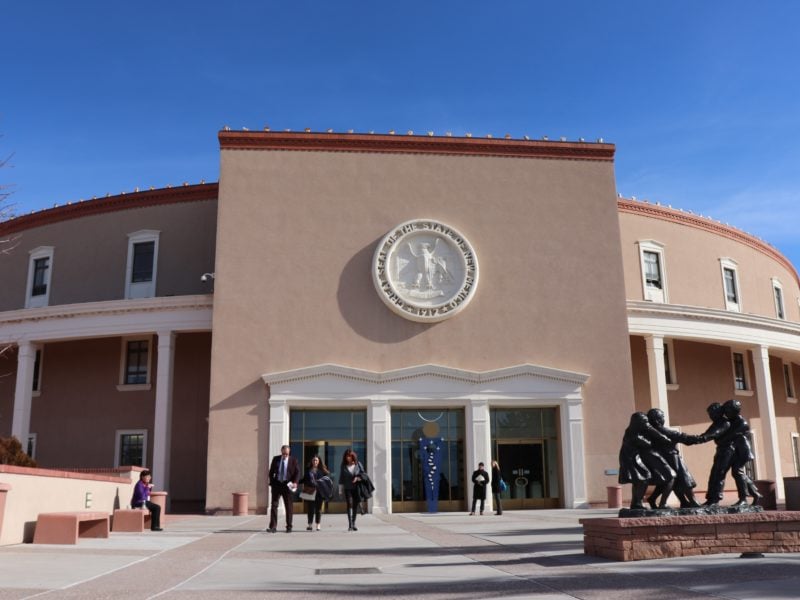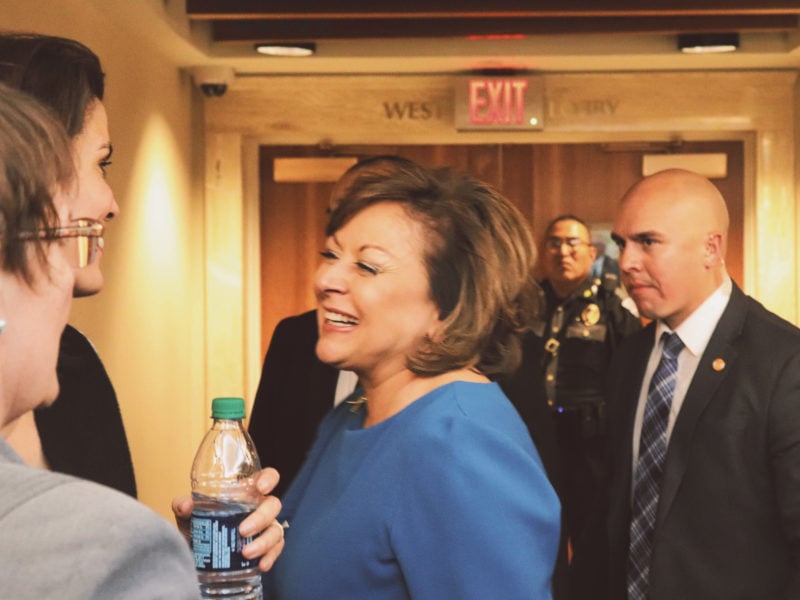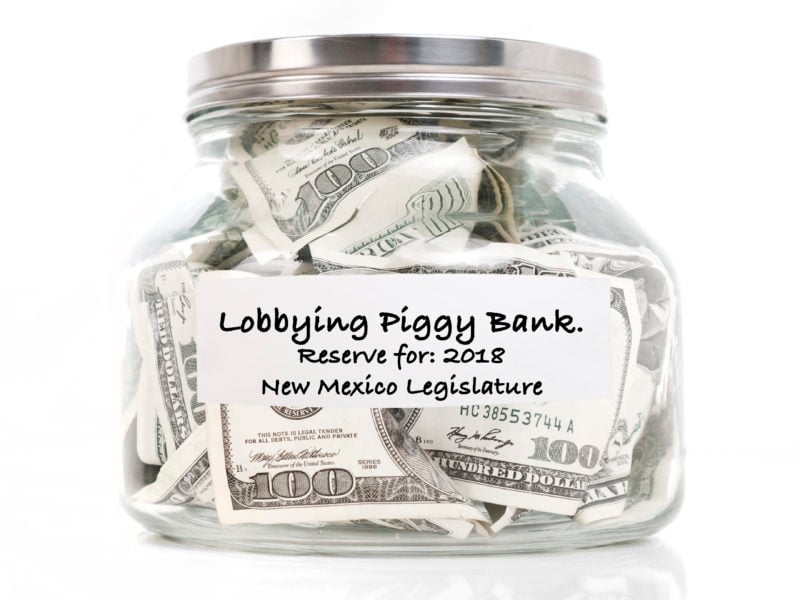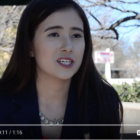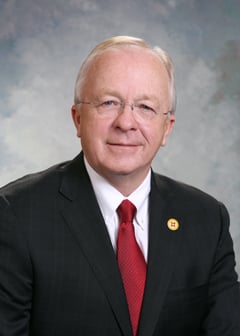State Rep. Carl Trujillo, D-Santa Fe, has raised more money than any other state legislative candidate except for the chamber’s two top lawmakers — a majority coming from big industries, political action committees and professional lobbyists, groups often thought of as “establishment,” a review by New Mexico In Depth shows. Trujillo, a three-term Democrat, is fighting for his political life after a woman working for an animal rights organization on Wednesday accused him of retaliating against her several years ago by stalling legislation after she rejected his sexual advances. Laura Bonar’s allegations came in an open letter released Wednesday, five weeks before the June primary, and a week before early primary voting starts in the race for legislative District 46,which stretches from Santa Fe to Española. Whoever wins June 5 — Trujillo or his primary opponent Andrea Romero — will most likely represent the district in the 2019 Legislature, although it’s possible a write-in or independent candidate could prevail. In two emails sent in response to Bonar’s letter, Trujillo said he barely knew Bonar, and described her as a tool of the establishment who is cynically using the #MeToo movement as a political weapon.
2018 Legislative Session
Legislative leader says dummy bills from now on are emergency bills
|
SANTA FE—State lawmakers on Thursday employed a rare procedural move to revive legislation that, it turns out, was only playing possum. Thursday’s action demonstrated why you can never say a bill is dead and how swiftly state lawmakers can pass a bill when they want. State lawmakers often speak of the sacredness of the legislative committee process, a check to rash decisions. However, “dummy” bills can be used as a workaround to that process, which is what happened Thursday. “Dummy” bills, which New Mexico In Depth wrote about Thursday morning — are quirks of the Legislature.
2018 Legislative Session
Dummy bills obscure how Legislature works
|
Lawmakers sometimes use “dummy” bills at the end of each legislative session to resurrect dead bills, to push through eleventh-hour measures or to respond to emergencies. But even veteran observers of New Mexico’s legislative process can find that “dummy” bills obscure an already opaque process. “Dummy” bills are usually—but not always—vehicles state lawmakers use after the deadline passes for introducing new legislation. Some legislators have expressed an interest in challenging the “dummy” bill process in the interest of shining more light on the legislative process. In an effort to pull back the curtain, New Mexico In Depth examined 116 dummy bills by searching for legislation titled “PUBLIC PEACE, HEALTH, SAFETY & WELFARE,” a dead giveaway of a generic —“dummy” bill.
2018 Legislative Session
‘Nothing ever dies’ at the Roundhouse, except maybe transparency
|
Gov. Susana Martinez wants each state lawmaker to disclose how much he or she spends on projects around the state. Making their emails public would be nice, too. However, the governor isn’t keen on sharing information about legal settlements the state negotiates. As for state lawmakers, they aren’t rushing to support calls from Martinez or some of their colleagues to shine more light on how the Legislature works. Legislation that would help New Mexicans better understand New Mexico state government is going nowhere fast in the legislative session that ends Thursday, a review by New Mexico In Depth has found.
2018 Legislative Session
House passes early childhood funding bill, 36-33
|
Rep. Javier Martinez talked with NM In Depth’s Sylvia Ulloa about House Joint Resolution 1, which would tap New Mexico’s permanent land grant fund for early childhood programs. It passed the House Tuesday on a 36-33 vote.A plan to fund early childhood education programs in New Mexico by adding an extra 1 percent to the distribution from the Land Grant Permanent Fund cleared the same hurdle it did last year — though with about an inch less clearance. Rep. Antonio “Moe” Maestas and Rep. Javier Martinez’s HJR1, Land Grant Fund Distributions, passed on the House floor on a 36-33 vote, one vote less than the resolution got in the 2017 session. Martinez said the debate about the benefits of early childhood education was largely over. The debate now is how to fund it to an extent that it could change the education system. “We can invest in global stocks or we can invest in our children,” he said in opening statements.
2018 Legislative Session
Language preservation focus of 2018 American Indian Day
|
Slideshow by Anthony Jackson
Native Americans from across the state gathered at the Roundhouse in Santa Fe on Friday to celebrate their cultures and languages during American Indian Day. New Mexico has 23 federally recognized tribes and there are 25 dialects of eight indegenous languages spoken in the state. Native Americans make up 10 percent of the state’s population. The governor of Santa Clara Pueblo, J. Michael Chavarria, opened the day with prayer and a few special guests — children from Zuni Pueblo and their teacher — drove over 200 miles to recite the Pledge of Allegiance in both English and Zuni. The Head Start program the children participate in has a language immersion program where the they can learn Zuni, their Native language.
Efforts look to support children and teen sexual assault survivors
|
The trauma Abrianna Morales, 16, experienced from sexual assault last year was compounded by isolation she felt during her recovery . There was no resource group or program specifically directed toward teens and youth. “I felt very alone, very isolated, having to deal with the ptsd, the trauma, all by myself,” Morales said. “I was sitting one day watching television and the character had to report a sexual assault, and it occurred to me, I didn’t know how to report a sexual assault.”
With the help of her parents she properly reported her case, but realized that not all young people who’ve been sexually assaulted have support from their parents. So she decided to do something about it.
2018 Legislative Session
Last-ditch effort aims to pay back NM school districts $40M
|
Is it possible to sneak $41 million into New Mexico’s budget — even after the House has already sent its version over to the Senate? School district leaders are sure going to try. The House Appropriations Committee heard impassioned pleas Wednesday from the Republican sponsor of a bill to pay back public school districts whose cash reserves were taken by the state to plug a gaping hole in the fiscal 2017 budget. Superintendents and school board members from all corners of New Mexico and Albuquerque traveled to the state capitol to show their support for the measure. The effort got a late start because of an unexpected increase of “new money” that was forecast Jan.
2018 Legislative Session
Native lawmakers carve out space for tribal voices at the statehouse
|
For Native Americans at the Roundhouse, the annual American Indian Day, celebrated on Friday, is a day to commemorate the struggle Native politicians have endured to find their voice in a predominately non-Native Legislature. Tribal leaders who moved to establish formal governing institutions or processes for their communities in the United States initially established relationships and forged agreements with the federal government. It wasn’t until the 1980s that Native leaders began to turn their attention more fully to developing stronger voices within state houses. The Reagan administration during that decade made dramatic cuts to social welfare programs, including funding that provided health care and other services to tribes. Reagan’s policy toward American Indians was in line with his general philosophy of moving resources and decision-making authority to states rather than centralized federal control. “This whole state’s rights agenda really forced a relationship where there was no Indian policy, there was no delineation of any shared responsibilities between the state and the tribes,” Regis Pecos, co-director of the Santa Fe Indian School Leadership Institute, said.
2018 Legislative Session
Ski passes, newspaper ads and meals: A look inside lobbyist spending during the session
|
What do ski passes, meals and newspaper ads all have in common? Lobbyists or their employers have purchased them in recent weeks as part of their ongoing efforts to build relationships with or bring lawmakers around to their perspectives on issues. According to mandatory reports filed since January 17th, lobbyists or their employers have spent more than $75,111 so far this session, slightly more than $68,000 spent by this time last year. About half the expenses were in the form of meals at restaurants in and around the Roundhouse, mostly larger events to which all legislators were invited. Lobbyist Natasha Ning told New Mexico In Depth (NMID) she was lobbying to establish a new scholarship at New Mexico Military Institute (NMMI), called the New Mexico Opportunity Scholarship.
2018 Legislative Session
Breaking down lawmakers’ bills on kids and families
|
New Mexico ranks 49th in child well-being. Wonder what the state’s lawmakers are doing about it? We looked at 2,586 legislative ideas on kids and families so you don’t have to. Here’s what we learned:
Lawmakers proposed more than double the number of bills, memorials and resolutions during the Richardson administration than during the Martinez administration. The database shows lawmakers proposed 1,749 legislative initiatives under Democrat Gov. Bill Richardson and 837 initiatives under Republican Gov. Susana Martinez.
